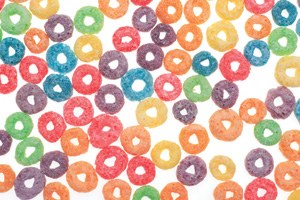Body talk
A troubling new trend among little kids in our country: The number of children younger than 12 who are hospitalized for eating disorders has increased 119 percent in recent years. A report by the American Academy of Pediatrics calls the trend “alarming” because it shows an increase in distorted body image in children. According to the study, the media is partly to blame for showing unrealistic body shapes, but the biggest impact may be coming from mothers who are unhappy with their own bodies sending unconscious messages to their kids. Moms: Check yourselves!
 Know dose?
Know dose?
If you’re confused by the instructions on that bottle of baby meds, you’re not alone. A big new study published in the Journal of the American Medical Association finds that dosing instructions on over-the-counter (OTC) liquid kids’ medicines are often confusing and inconsistent. Researchers studied the directions on 200 popular OTC medicines for coughs, colds, allergies, pain and other ailments; they found that one in four of the drugs don’t come with a dosing device (dropper or cup), and when devices were included, most had markings that didn’t match up with printed instructions.
Period piece
An international research team has just identified 30 new genes responsible for determining when girls reach puberty, and many of them are the same genes that cause obesity. Researchers hope the new findings will one day help reverse the trend of early-onset puberty. Ten years ago, the average age of menarche (first period) was 14–15 years; now it’s 12–13 years. Early menarche is linked to increased risk of breast cancer, cardiovascular diseases and type 2 diabetes; experts say the new findings suggest that if parents and doctors intervene with girls who are at high risk of obesity, they may be able to delay menarche.
 Hey, sugar
Hey, sugar
Try this at home: Swap out high-sugar cereal for a low-sugar option, put out a bowl of fresh fruit, and stand back and watch the magic happen. Researchers say that most kids will eat the fruit if they’re not eating high-sugar cereal. Win-win! The study divided 90 kids ages 5–12 into two groups. One group got high-sugar cereal (Frosted Flakes, Cocoa Pebbles or Froot Loops), the other got low-sugar cereal (Corn Flakes, Rice Krispies or Cheerios). Each group also had bowls of cut-up bananas and strawberries, and was told to eat at will. More than half of the low-sugar group (54 percent) ate the fresh fruit, compared to only 8 percent in the high-sugar group!
Giveaway
Family Game Night!
Start a new tradition for the new year: Family Game Night! You could win a box of great games from our friends at Seattle’s own The Wonder Forge. Prizes include fun “Cat in the Hat” and “Busytown” games for building skills for kids ages 3 and older (we’ll choose for you). To enter, visit parentmap.com/giveaways by Jan. 31.
—Kristen Russell


